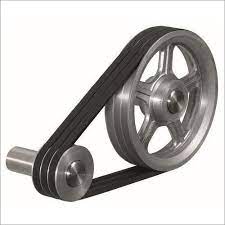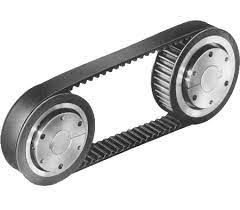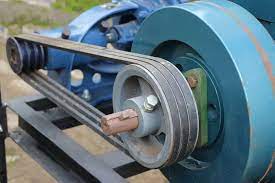Product Description
Product Description
Conveyor roller has many varieties in conveyor system.
1.Mining & Minerals Industry
2.Cement Industry
3.Chemical Industry
4.Coal Industry
5.Paper and Pulp Industry
6.Iron and Steel Industry
7.Textile Industry
8.Food Processing Industry
9.Leather and Plastic Industry
The size can be customized.
Company Profile
Certifications
HangZhou CHINAMFG Machinery Co, Ltd is located in HangZhou, east to ZheJiang and south toHangZhou and HangZhou nearly, with convenient transportation. The company was established in 2006.It covers an area of 20000 square meters. Has strong technicalforce and sufficient equipment processing capacity. With an automatic roller produc-tion line.The annual production capacity of roller is around 2 million pieces.Thecompany has an independent research and development team that designs, develops,and manufacturers product-specific equipment in logistics equipment.
The company focuses on the production of various types of rollers.The main productsare: gravity rollers. Steel single/double chain rollers, grooved o-belt conveyor rollers,ploy-vee conveyor rollers, accumulating rollers, Tapered roller……Various of middleand high-end products.
Insist on using high-quality products to seek company development, be honest andtrustworthy, to create value for customers.
HangZhou CHINAMFG Machinery is your trust brand!
Workshop
/* January 22, 2571 19:08:37 */!function(){function s(e,r){var a,o={};try{e&&e.split(“,”).forEach(function(e,t){e&&(a=e.match(/(.*?):(.*)$/))&&1
| Material: | Steel |
|---|---|
| Application: | Chemical Industry, Grain Transportation |
| Structure: | Spring Plate Type Roller |
| Bearing Type: | Double Sealed Bearing |
| Surface Treatment: | Zinc Plated |
| Transport Package: | Standard Export Case |
| Customization: |
Available
| Customized Request |
|---|

Are there different types of drive pulleys, and how do they differ in their applications?
Yes, there are different types of drive pulleys available, each designed for specific applications based on factors such as power requirements, belt type, speed, and environmental conditions. These different types of drive pulleys offer variations in design, construction, and features to suit various industrial applications. Here’s an overview of some common types of drive pulleys and how they differ in their applications:
1. Flat Belt Pulleys:
Flat belt pulleys have a flat cylindrical surface and are typically used with flat belts. They are commonly found in applications where moderate power transmission is required, such as in light-duty machinery, conveyor systems, and agricultural equipment. Flat belt pulleys are known for their simplicity, cost-effectiveness, and ease of installation. They are available in various sizes and materials, including cast iron, steel, and aluminum.
2. V-Belt Pulleys:
V-belt pulleys have a V-shaped groove on their cylindrical surface and are designed to work with V-belts. The V-groove helps improve belt grip and prevents slippage, making them suitable for high-power transmission applications. V-belt pulleys are commonly used in automotive engines, industrial machinery, HVAC systems, and heavy-duty equipment. They are available in different configurations, including single-groove, multi-groove, and variable speed pulleys.
3. Timing Belt Pulleys:
Timing belt pulleys are designed to work with timing belts, also known as synchronous belts. These pulleys have teeth or grooves on their surface that mesh with corresponding teeth on the timing belt, providing precise and synchronous power transmission. Timing belt pulleys are commonly used in applications that require accurate positioning and synchronization of components, such as CNC machines, robotics, printing presses, and automotive engine systems.
4. Chain Drive Sprockets:
Chain drive sprockets are used in systems that utilize roller chains for power transmission. These pulleys have teeth or cogs that mesh with the links of the roller chain, enabling efficient power transfer. Chain drive sprockets are commonly used in heavy-duty applications, such as industrial machinery, conveyors, motorcycles, bicycles, and agricultural equipment. They are available in various configurations, including single-strand, double-strand, and multi-strand sprockets.
5. Cone Pulleys:
Cone pulleys have a tapered or conical shape and are used in applications that require variable speed drives. By adjusting the position of the belt on the conical surface, the effective pulley diameter changes, resulting in different speeds. Cone pulleys are commonly found in machine tools, drill presses, lathes, and other equipment where variable speed control is necessary.
6. Magnetic Pulleys:
Magnetic pulleys are designed with a magnetic surface to attract and hold ferrous materials. They are used in applications such as magnetic separators, material handling systems, recycling, and mining industries. Magnetic pulleys are effective in removing tramp iron or unwanted metal contaminants from conveyed materials.
These are just a few examples of the different types of drive pulleys available. Each type has its own specific design and features that make it suitable for particular applications based on factors like power transmission requirements, belt compatibility, speed control, and environmental conditions. It’s important to select the appropriate type of drive pulley based on the specific needs and operating conditions of the application to ensure optimal performance and longevity.

What safety considerations should be kept in mind when using drive pulleys?
When using drive pulleys, it is essential to prioritize safety to prevent accidents, injuries, and equipment damage. Here are important safety considerations to keep in mind:
1. Guarding and Enclosure:
Drive pulleys should be properly guarded and enclosed to prevent accidental contact with moving parts. Guards and enclosures should be designed and installed in accordance with applicable safety regulations and standards. They should effectively restrict access to the pulley and associated belts or chains, reducing the risk of entanglement or entrapment. Regular inspection and maintenance of guards and enclosures are necessary to ensure their effectiveness and integrity.
2. Lockout/Tagout Procedures:
When performing maintenance, repair, or servicing tasks involving drive pulleys, proper lockout/tagout procedures must be followed. Lockout/tagout procedures involve isolating the power source, locking out the energy supply, and using tags to communicate the equipment’s inoperable status. This ensures that the drive pulley and associated machinery cannot be accidentally started or operated while maintenance work is being conducted, protecting personnel from unexpected hazards.
3. Training and Education:
Personnel involved in operating, maintaining, or working near drive pulleys should receive proper training and education on safe practices. They should be familiar with the potential hazards associated with drive pulleys and understand the safe operating procedures, including the use of personal protective equipment (PPE), lockout/tagout protocols, and emergency response measures. Ongoing training programs should be implemented to keep personnel updated on safety best practices.
4. Risk Assessment and Hazard Identification:
A comprehensive risk assessment should be conducted to identify potential hazards and risks associated with the operation and maintenance of drive pulleys. This assessment should consider factors such as pinch points, entanglement hazards, electrical hazards, and potential for material spillage or falling objects. By identifying these risks, appropriate control measures can be implemented to mitigate the hazards and ensure a safe working environment.
5. Maintenance and Inspection:
Regular maintenance and inspection of drive pulleys are crucial for safety. Routine inspections should be performed to check for signs of wear, damage, or misalignment. Any issues identified should be promptly addressed, and damaged or worn components should be replaced. Lubrication requirements should be followed to maintain smooth operation and prevent overheating. Adequate records of maintenance and inspections should be maintained for reference and compliance purposes.
6. Ergonomics and Body Mechanics:
When working with drive pulleys, proper ergonomics and body mechanics should be observed to minimize the risk of strain or musculoskeletal injuries. Personnel should be trained in proper lifting techniques, avoiding excessive bending, lifting heavy loads, and maintaining good posture. Mechanical aids, such as hoists or lifting equipment, should be used when handling heavy pulleys or components to reduce the risk of injuries.
7. Warning Signs and Labels:
Appropriate warning signs and labels should be placed near drive pulleys to communicate potential hazards and provide safety instructions. These signs should be clearly visible and easy to understand. They may include warnings about rotating parts, entanglement hazards, pinch points, and required PPE. Warning signs and labels serve as visual reminders to personnel and visitors to exercise caution and follow safety protocols.
8. Emergency Stop and Emergency Response:
Drive pulley systems should be equipped with emergency stop controls that can quickly shut down the equipment in case of emergencies or hazardous situations. Personnel should be trained on the location and operation of emergency stop buttons. Additionally, an emergency response plan should be in place, outlining procedures for addressing accidents, injuries, or equipment malfunctions. This plan should include protocols for providing first aid, reporting incidents, and evacuating the area if necessary.
In summary, ensuring safety when using drive pulleys is of paramount importance. This involves proper guarding, lockout/tagout procedures, training personnel, conducting risk assessments, performing regular maintenance and inspections, observing ergonomics, using warning signs, and having emergency stop controls and response plans in place. By following these safety considerations, the risks associated with drive pulleys can be minimized, promoting a safe working environment.

What are the advantages of using drive pulleys for power transmission?
Using drive pulleys for power transmission offers several advantages in mechanical systems. Drive pulleys play a critical role in efficient power transfer and contribute to the overall performance and reliability of the system. Here are some of the advantages of using drive pulleys for power transmission:
1. Efficient Power Transfer:
Drive pulleys provide an efficient means of transferring power from a driving source to driven components. They ensure a solid mechanical connection, allowing for smooth and reliable power transmission with minimal energy losses. By optimizing power transfer, drive pulleys help maximize the efficiency of the system, leading to improved performance and reduced energy consumption.
2. Speed and Torque Conversion:
Drive pulleys, when used in conjunction with belts or chains, enable speed and torque conversion between the driving source and the driven components. By varying the size ratio between the pulleys, different speed and torque relationships can be achieved. This flexibility allows for the adaptation of power output to meet the specific requirements of the driven components, optimizing efficiency and performance.
3. Mechanical Advantage:
Drive pulleys can provide mechanical advantage in power transmission systems. By utilizing different-sized pulleys or multiple pulley arrangements, the mechanical advantage can be increased. This allows the driving source to exert a greater force or torque on the driven components, enabling the system to handle higher loads or resistance. The mechanical advantage provided by drive pulleys enhances the efficiency and capability of the system.
4. Versatility and Adaptability:
Drive pulleys offer versatility and adaptability in power transmission applications. They can be used with various types of belts, cables, or chains, allowing for flexibility in system design. Drive pulleys can accommodate different power requirements, speeds, and load capacities. This versatility makes them suitable for a wide range of industries and applications, from automotive and manufacturing to mining and agriculture.
5. Precise Motion Control:
Drive pulleys, especially when combined with timing belts or chains, provide precise motion control in mechanical systems. The toothed design of timing belts and pulleys ensures accurate positioning and synchronization of components. This is crucial in applications that require precise movement, such as robotics, CNC machines, and conveyor systems. Drive pulleys contribute to the overall accuracy and repeatability of motion control systems.
6. Reduced Slippage and Vibration:
Drive pulleys, particularly those designed with V-grooves or toothed profiles, offer improved grip and reduced slippage between the pulley and the belt or chain. This minimizes energy losses due to slipping and enhances power transmission efficiency. Additionally, the stable engagement between the pulley and the belt or chain reduces vibration, ensuring smoother operation and reduced wear on system components.
7. Easy Maintenance and Serviceability:
Drive pulleys are typically designed for easy maintenance and serviceability. Belts or chains can be easily installed, adjusted, or replaced, allowing for efficient maintenance tasks. Drive pulleys often feature accessible mounting points and adjustment mechanisms, simplifying belt tensioning or alignment procedures. This ease of maintenance reduces downtime, enhances system reliability, and ensures optimal efficiency over the lifespan of the equipment.
In summary, using drive pulleys for power transmission offers advantages such as efficient power transfer, speed and torque conversion, mechanical advantage, versatility, precise motion control, reduced slippage and vibration, and easy maintenance and serviceability. These advantages contribute to the overall performance, reliability, and efficiency of mechanical systems.


editor by CX
2024-05-16














